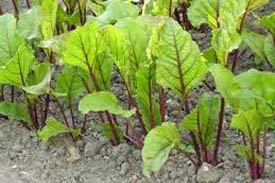Growing Grapes
Growing grapes is easy, that is if you get started. At my retreat I had envisioned the legal limit for a homeowner of a ¼ acre. Unfortunately I was overwhelmed with projects, but the deer and birds had a good treat. Many of these vines are still growing. .My desire to make my own wines never diminished, but in recent years I have been researching the benefits of grape seed extracts and locating the correct non-developed semi-wild antique grapes for my new venture.
I have one antique vine growing while the others died out after12 years. I am committed this year to growing new vines and planting them – somewhere – in the garden area where I can see them daily and be more attentive. Today the buds are swelling and it is time to prune that last remaining old time vine.
Perhaps you have a neighbor with overgrown vines that need pruning. Many people start arbors to sit under in the summer’s sun and enjoy the attraction of wasps (pun intended). I prefer to set poles and make a long fencerow like the commercial grape yards have that you need to visit and get an idea of the culture. These massive vineyards have all sorts of squabbling with the bureaucrats and such, but as a homeowner a few vines will be fun and a learning challenge-plus you could start making wines for health.
Predators will get into the yards such as deer, raccoons and just as soon as the grapes are perfect and you set you sights on a harvest the next day the birds will be there ahead of you. Farmers have to be up when the cock crows at 3: A.M.
I visited a neurologist this last year who was from Romania. He had two obsessions, one being Chamomile and the other Red Wine. He recommended to me that all problems could be solved with a glass of Red Wine at sunset. Who am I to argue with such esteemed knowledge; so I save the empty wine bottles for reuse-hopefully.
My mother, God rest her soul, use to make wine in a 5-gallon stone crock. Her method was basic old country method of layering the crock with squished by hand grapes, then a layer of leaves, then repeating the progress. Filled with spring water and then left to set with a crock lid; it was tasted in the next year, or at least where I could not sample it my self. Wild yeasts on the grapes and leaves usually produced sweet wine. Vinegar wine was used too.
Pruning grapes implies that we use a hand cutter-I prefer the anvil type vs. the scissor type. Each vine is showing the swell of buds, the weather is turning into spring warmth and you have to work fast. Leaves and flowers will be sprouting and sap flowing. Quite often the grape farmer may cut a vine several feet long, which is good and proper, but it “bleeds” sap from the rooted end. You can solve this minor problem by touching a match to the bleeding end and cauterize it. The vine will continue to sprout new shoots.
Let us assume you have cut a nice 6’ vine with lots of buds. The base of the vine will be cut square so we know that each “cutting” from the vine is the bottom, or rooting end, we are going to start roots from. You will want to start from the bottom near a bud which when under the earth start to grow roots. You will want two or three buds above the rooted section. Therefore as an example if you have a 2-foot cutting, the rooted bud will be covered with soil at least 1/3 of the way. The remaining exposed buds will continue to grow into leaves and flowers. Massive grape plantings as shown in the “Millers Nursery” catalog show how a plow furrow was made and the cuttings laid in and raked up to be unearthed the following year, or when ever there was as demand for that grape plant.
In our tiny arbor, or row, we will start with empty large cans, filled with potting soil, a hole on the bottom and just a pinch of magnesium sulfate and two pinches of kelp powder, mixed well. The bottom of the can requires a hole for drainage. You will need a large 24 can case size wood frame with a screen bottom to set your canned rooted plants in. Each plant cutting is dipped in a “rooting powder” available everywhere. This aids the root formation. If you really go natural you can cut small pieces of willow branch, soak in water for a few days and then put the cuttings in the willow water to soak before immersing in the loose potting soil. Take a pencil sized “dibble”, yes that is the name for this soil hole maker, and gently slide the cutting into the mixed soil, tamp it tight and when the flat is full, bottom water by setting the flat into a tub of some sort filled with water just to the point of the cans being loose and floating so they will draw water up into the soil medium, lift the flat out to drain, shelve it in sunlight and make sure it does not dry out.
Professional horticulturists when making cuttings from a vine will use two different cut angles. The bottom root problem is cut square and the top part is cut at a 45-degree angle. This indicates a top and bottom if you are doing tons of cuttings at one time so that you do not plant upside down and torture the plant.
Save your wine bottles. Make your wine from grapes in a large container according to any of a hundred recipes available. The wine yeast you purchase is important; varieties are available from health and organic food stores. Label what yeast you use as the settling in period is at least six months. White sugar can be used as a booster but corn sugar may be a taste treat. Make at least 5 gallons in each container and when the time is neigh, just slip a plastic “thief” tiny tube into the top and try a sip. Then with your approval you can gently, without disturbing the lee (sludge) on the bottom, siphon off into each bottle.
In olden times corks were used and sealed in sealing wax, not candle wax, tipped forward to keep the cork wet and air out. So this implies you might construct a wine cellar of treated wood or cedar wood wine racks. I had the idea once and built a wine rack, wall size, from 4” PVC white plastic pipe and a wood frame. The bottles could be tipped ever so slightly to cover the cork. Wine ferments best in the unheated basement and have a locked door to the wine cellar.
It is amazing how many bottles you need, especially for dinner parties.
Besides grapes, we can make good wines from anything, including favorites like elderberries, blackberries, apples, pears, honey, parsnips, and on and on. Your garden dreams keep expanding of course.
Good luck and God Bless,
Old Timer,
COPYRIGHT: back2theland.com, 2013, all rights reserved.



